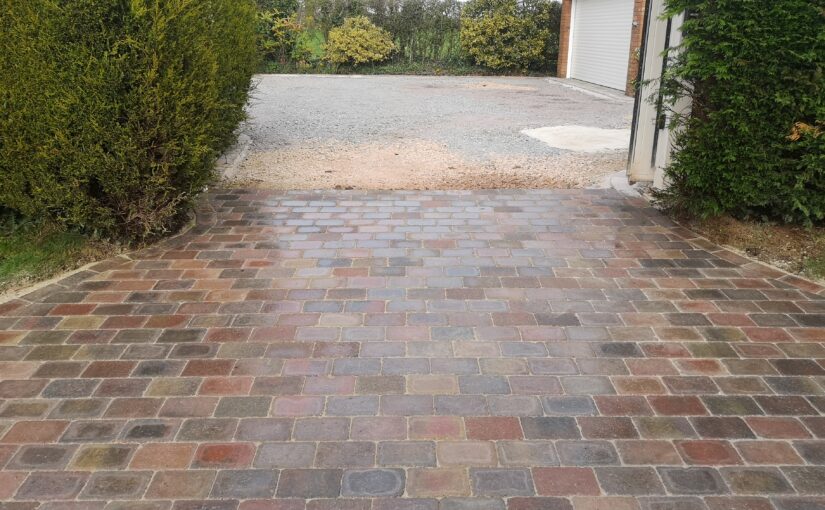The block paving process begins by preparing the base for the block pavers. This is done by excavating a shallow trench and filling it with a layer of compacted sub-base and sand. If installing block pavers in an area that is subject to heaving, such as around tree roots, then additional layers may be needed. Once the excavation and base have been prepared, block pavers can begin to be laid.
For block paving projects in Staffordshire, using block pavers from local suppliers ensures that you get blocks that are better suited for your climate. Blocks from further afield may suffer from frost damage or other weathering effects over time. When laying block paving in Staffordshire, use block pavers with a minimum compressive strength of 6.0MPa and a minimum flexural strength of 3.0MPa to ensure maximum durability.
The block paving is laid in courses, with each block interlocked together using joints filled with kiln-dried sand. This helps to keep the pavers firmly locked in place, preventing them from shifting or becoming loose over time. As block paving can be designed for decorative effects, it’s important to always start laying blocks from the centre of the area and work your way outwards. This ensures that any patterns are not disturbed as work progresses around them. Once all the block pavers have been successfully laid, they should be compacted down using a vibrating plate compactor.
Finally, block pavers should be sealed with a quality block paving sealer. This helps to protect the block pavers from the weather, staining, and weed growth. Sealing block paving in Staffordshire is highly recommended to extend its life and keep it looking great for years to come.
By following these simple steps you can ensure that your block paving project in Staffordshire will look great and stand the test of time. With careful preparation and installation, block pavers can provide an attractive addition to any home or business property for many years to come.
